Einstein Flunked Math

Einstein is undoubtedly one of the smartest people that’s ever lived, but stories have circulated that he flunked math. We all love the idea that even the great Einstein struggled, but that’s not the truth. Einstein failed a college entrance exam, but it wasn’t because of the math section. He actually bombed the botany, zoology, and language sections.
And just to clarify things, let's set the story straight from the man himself. Einstein had dismissed the story that he read in a news article, responding, "Before I was 15, I had mastered differential and integral calculus.” So yeah, Einstein would rather you just didn't think anything less than him being a mathematical genius. Point taken, Einstein.
Marie Antoinette Said, “Let Them Eat Cake”

“Let them eat cake,” is a phrase that’s been used to show how out of touch rulers (and people) are. Well, the first time it appeared, it was in Jean-Jacques Rousseau’s autobiography in reference to Marie-Therese, who was married to King Louis XIV in 1660. In fact, when the book was published, Antoinette was only nine and hadn’t even married.
And on top of this, the phrase that Marie Antoinette supposedly said was not even about cake. The phrase, "Qu’ils mangent de la brioche," refers to brioche, a type of bread. And while the bread is somewhat sweet, you wouldn't really call it cake. It's not cake. So, just lies all around.
Cars Were Invented in America
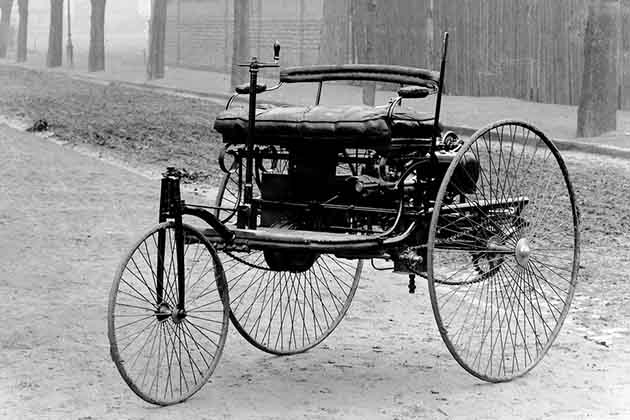
If someone asked you about the first car ever made, most of us bring up Henry Ford’s Model T, which was first introduced in 1908. It was great and all, but it wasn’t the first car. In reality, Ford wasn’t even the first person to sell a vehicle in the United States.
That distinction goes to Ransom E. Olds, who sold the first Oldsmobile in 1901. Nicolas Joseph Cugnot was the first person to create an actual vehicle in 1769. This car was steam-powered and was called the Cugnot Fardier, a three-wheel truck designed that Cugnot designed for the French military.
George Washington “Cannot Tell a Lie”
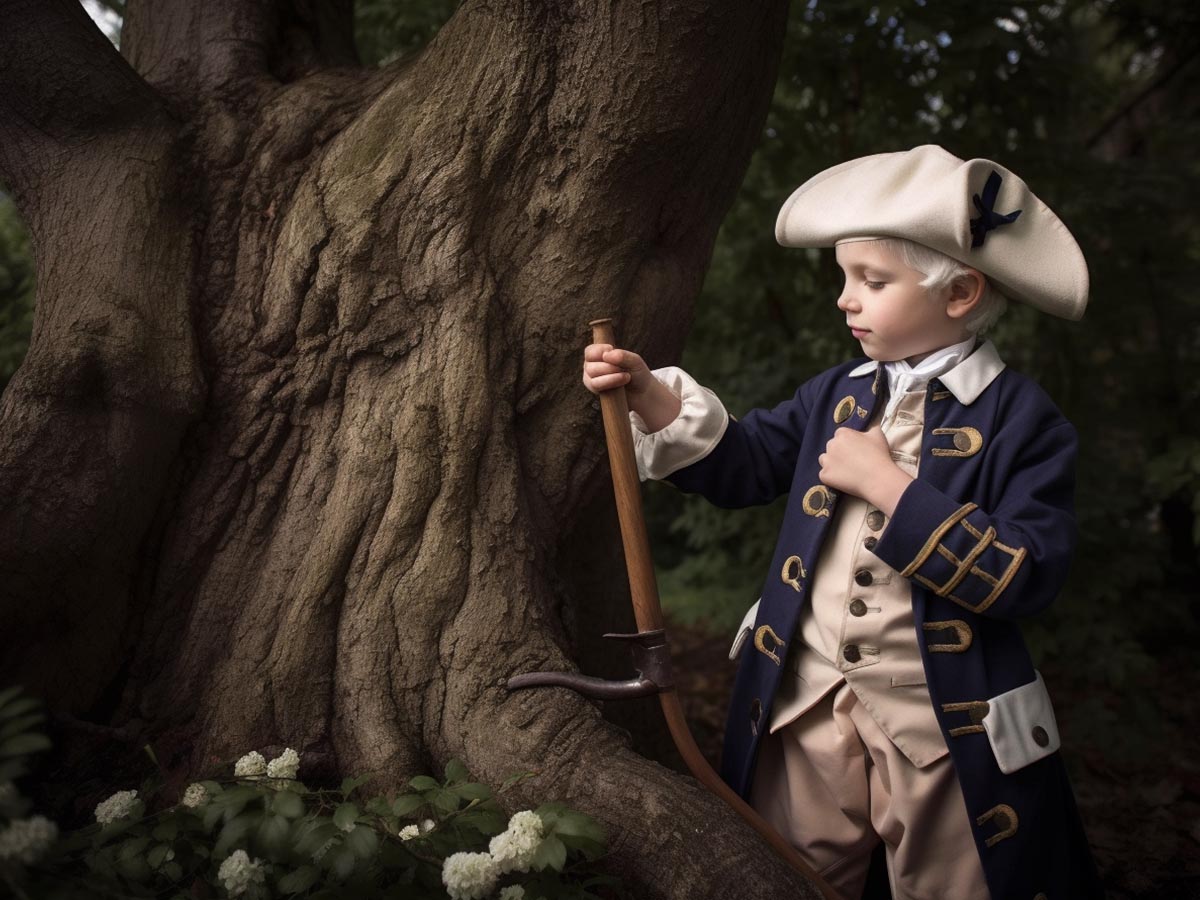
The story goes that when Washington was six years old, he chopped down his dad’s cherry tree. When his dad confronted him, he stated, “I cannot tell a lie” and confessed. This tale was completely fabricated in 1806 in a biography of Washington.
Why was this story made up? It's difficult to say. But because it was made up by one of George Washington's first biographers, it became a story that was passed on into legend. After Washington's death in 1799, Mason Locke Weems was ready to make up whatever he needed to in order to create an exciting biography for the readers of the time.
"Never let the truth get in the way of a good story. " - Mark Twain
Adolf Created the Autobahn

Adolf wasn’t an engineer, and there’s no way he had input. In fact, construction of the Autobahn began in 1929--that’s four years before the fascist became chancellor! When Adolf came to power, he took the program over and claimed he started it, which wasn't true at all.
The autobahn, Germany's federally controlled highway system, was first conceived back in the 1920s, but its construction was slow, and not much work was done on it until Adolf came into power. His enthusiasm toward the project undoubtedly made some people believe that he created it but he didn't.
The Founding Fathers Were Christians

Thomas Jefferson and Benjamin Franklin were deists, meaning they believed in God but didn’t subscribe to any holy book. George Washington was an Episcopalian, and John Adams was a Unitarian. Adams even claimed, “the government of the United States is not, in any sense, founded on the Christian religion.”
If there was any source of faith that had any influence on the founding fathers of the country, it would have to be that of deism. Many of the most notable founding fathers, like Jefferson, Franklin, Madison and Washington, practiced deism, a faith that stresses human reasoning to solve problems in the world rather than looking to a deity.
Washington Had Wooden Teeth

Washington did have dentures, but they weren’t made out of wood. The dentures in question were made from hippopotamus ivory, which stained easily and gave it a grain that looked like wood. Other materials he used included gold, lead, and even human teeth.
And not only did George Washington not have wooden teeth, but mostly nobody did, as it was not a common material used by dentists. So, where does the myth come from? A version of the wooden teeth myth said that Washington carved the dentures himself but the truth is that he only made repairs on the dentures that were made for him.
The Declaration Was Signed on July 4th, 1776
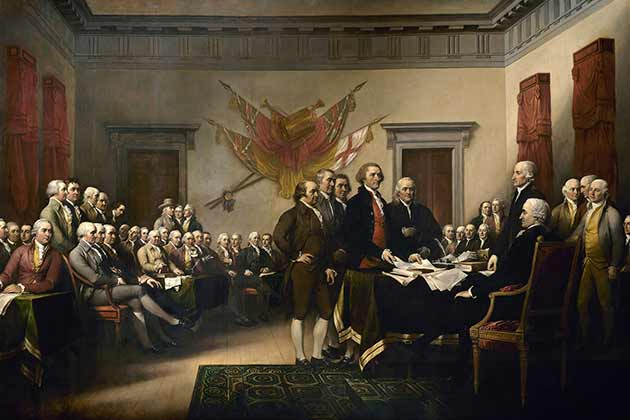
It’s said that the United States of America was founded on July 4th, 1776, because everyone signed the Declaration of Independence on this day. This one is a lot to unpack. First, the first draft of the Declaration wasn’t presented until July 2nd, and a revision was approved on the 4th.
This is when John Hancock signed it. However, it took months for the remaining Continental Congress members to sign it. Historians agree there’s no way all 56 members were in the same room at the same time to sign it. Maybe if they had offered free appetizers, they'd have been more inclined to be there for a kickass party, but it just doesn't seem feasible without modern transportation.
Betsy Ross Sewed the First American Flag
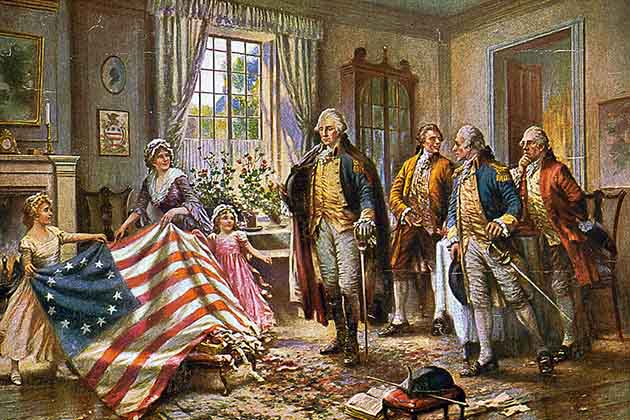
The only evidence we have that Betsy Ross designed and sewed the American flag is from her grandson. The real creator was probably Francis Hopkinson, who also signed the Declaration of Independence. He designed many seals for the United States government, so it isn’t a jump to think he did the same for the American flag.
Betsy Ross was credited by her relatives in 1870 for sewing the first American flag, but who hasn't wanted to brag about their relatives? In reality, there's no archival evidence nor recorded accounts that this actually happened. But the family claims that George Washington and two members of the continental congress visited the home of Betsy Ross.
George Washington Was Our First President
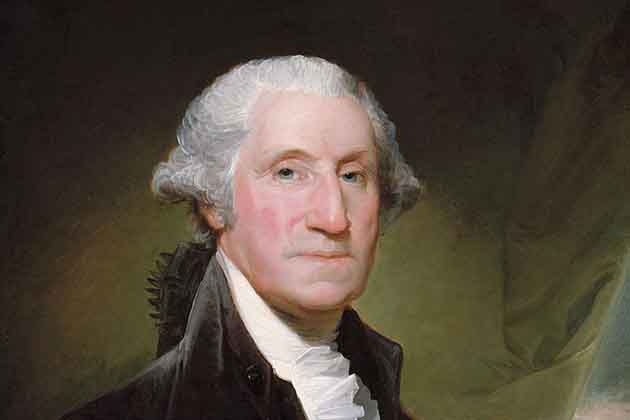
George Washington was far from our first president. There were several presidents elected during the American Revolution. The first was a man named Peyton Randolph, who created the Continental Army. George Washington holds the distinction of being the first president that was elected by the people, but he was technically the 15th president.
So who were these other men? Well after Peyton Randolph, Henry Middleton was chosen as the second president, and following that, Peyton Randolph was chosen again. Other presidents included John Hanson, Thomas Mifflin, Richard Henry Lee, and most notably, the famous John Hancock - big signature guy.
Lincoln Abhorred Slavery
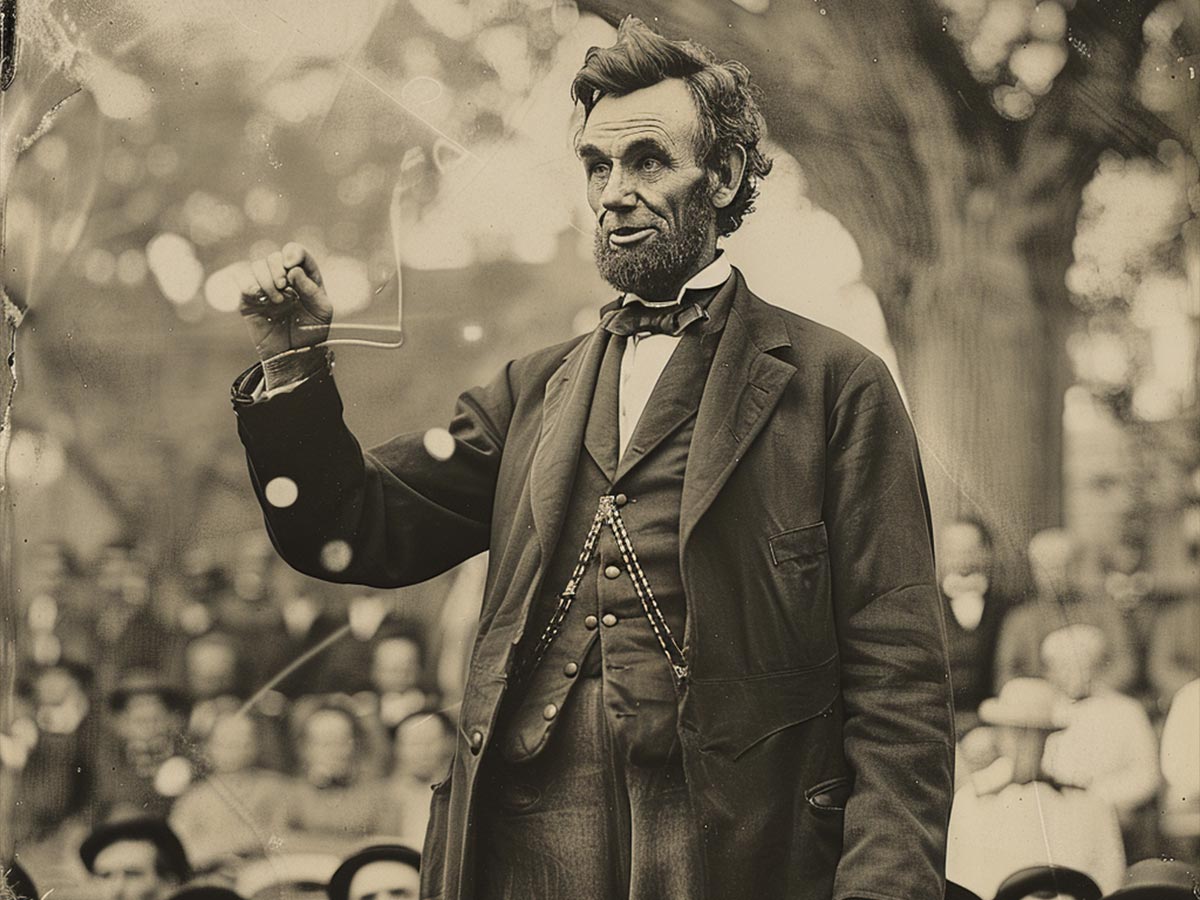
Lincoln gave us the Emancipation Proclamation in 1862, but that's not the whole story. Lincoln had some complicated feelings about slavery. In a letter, written in 1862, he wrote, “If I could save the Union without freeing any slave I would do it, and if I could save it by freeing all the slaves I would do it. What I do about slavery, and the colored race, I do because I believe it helps save the Union.”
And in fact, a speech from Lincoln in 1858 shows how Lincoln did not even view black people as equals, saying, "I will say then that I am not, nor ever have been, in favor of bringing about in any way the social and political equality of the black and white races."
Paul Revere Never Shouted in the Streets
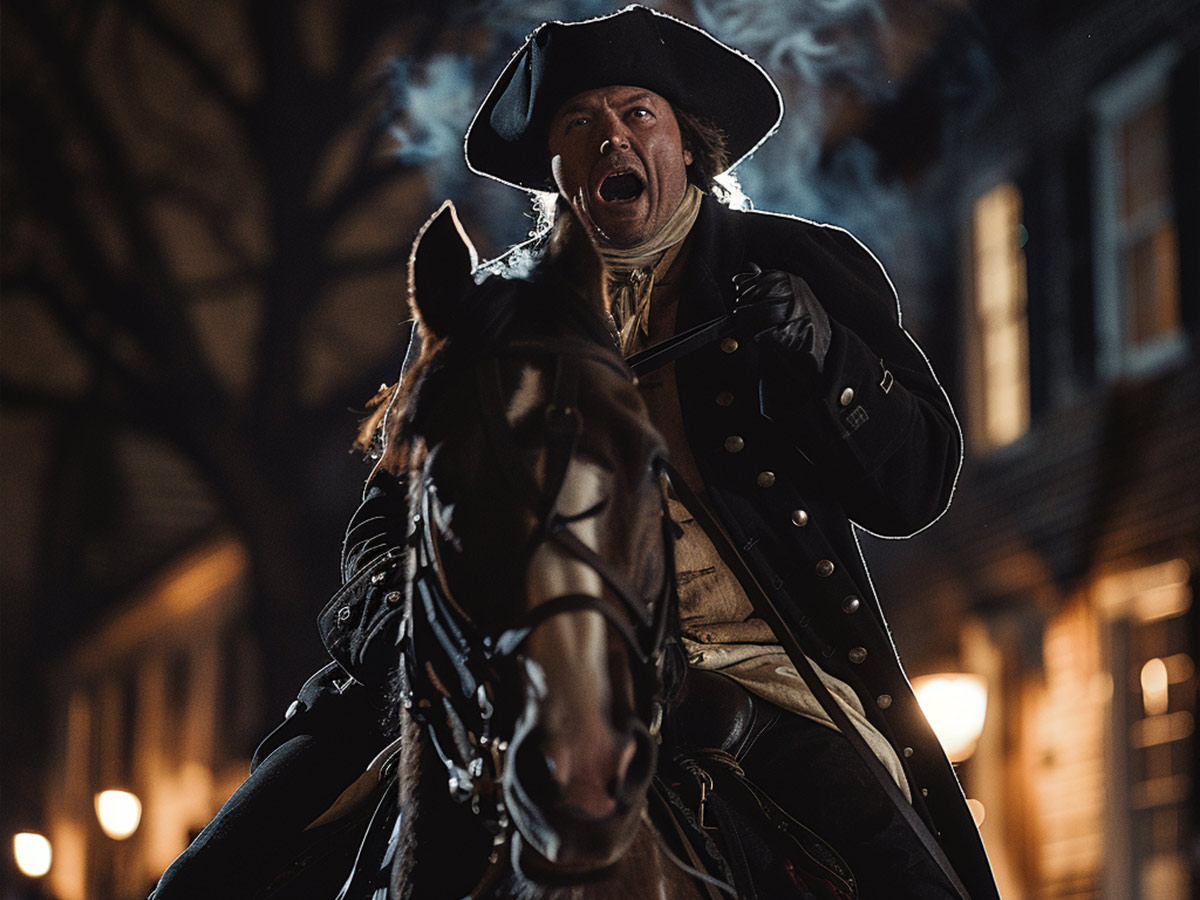
The idea of Paul Revere riding through the streets yelling “The British are coming!” is certainly a great one, but it never happened. At that point, the colonies were technically British, so it wouldn’t make sense. In addition to this, everyone wasn’t cool with the idea of a revolution.
Historians agree he rose alarm, but it was more of a whisper and was probably “the regulars are coming out.” And when you think about it, that actually makes more sense than shouting and letting the British know you are onto them and about to kick them out.
Napoleon Was Short

It’s become a popular joke that Napoleon was short. It even spawned the phrase “Napoleon complex,” but Napoleon wasn’t short. In truth, he was 5’7”. By today’s standards, that may be short, but that height was pretty respectable in France when he was alive. Over time, we’ve just gotten taller.
If you've ever been to those old historic homes, you've probably noticed how tiny their stairs were, and it's certainly not because they didn't know how to craft bigger stairs. The average height of a person in France in Napoleon's time was 5'4" putting Napolean a bit on the tall side.
Cinderella Wore Glass Slippers

Disney films don’t really put historical facts high on the list when they’re making a movie. If you ever thought Cinderella’s glass slippers were impractical, you’re right. There are a ton of variations of the fairytale, but the earliest describe Cinderella wearing slippers made of white squirrel fur.
The tale was re-written in 1697 by Charles Perrault who replaced the word vair with verre, which means glass. The earliest variation of the story was written sometime before 23 AD, recounted by Greek geographer Strabo. In that story, a young Greek slave girl marries the king of Egypt.
Darwin Never Claimed Man Evolved from Apes

Darwin was a smart man, and he never claimed that modern man evolved from apes. What Darwin actually said was that he believed we shared a common ancestor. From there, the different species evolved through a process of natural selection. You can check out his quote in his book, On the Origin of Species.
The belief that evolution is a claim about men coming from monkeys is a complete misconception and an oversimplification of the theory. Make no mistake, the "apes" we evolved from were humans, just early forms of humans, and a lot hairier at that—and certainly smarter than the animals you would find at a zoo.
Shakespeare Created Hamlet

Everyone knows the story of Hamlet, but Shakespeare didn’t create it. He based it on another piece called The Life of Amleth, which was written by Saxo Grammaticus. Both stories were based on the Prince of Denmark, both men went mad because of the hasty marriage to the killer, and both princes kill the usurper.
The Scandinavian legend itself is said to be derived from an old Icelandic poem, and the name Amleth is derived from the word "Amlóði" which means "fool." Thus, Hamlet is a fool. Shakespeare wrote his play between 1599 and 1602, it is said, so clearly not a coincidence.
“A.D.” Means “After Death”

Many people think that A.D. means “after death.” It’s a good way to differentiate A.D. from B.C., but it isn’t correct. A.D. stands for Anno Domini, a Latin phrase actually means “in the year of the Lord.” As for B.C, that stands for Before Christ.
Many historians (and those in scientific fields) use C.E. and B.C.E., meaning “common era” and “before common era,” respectively. The new terms are more inclusive and can resonate more with cultures that don't believe in Christ, since not everyone in the world is Christian.
Columbus Discovered America
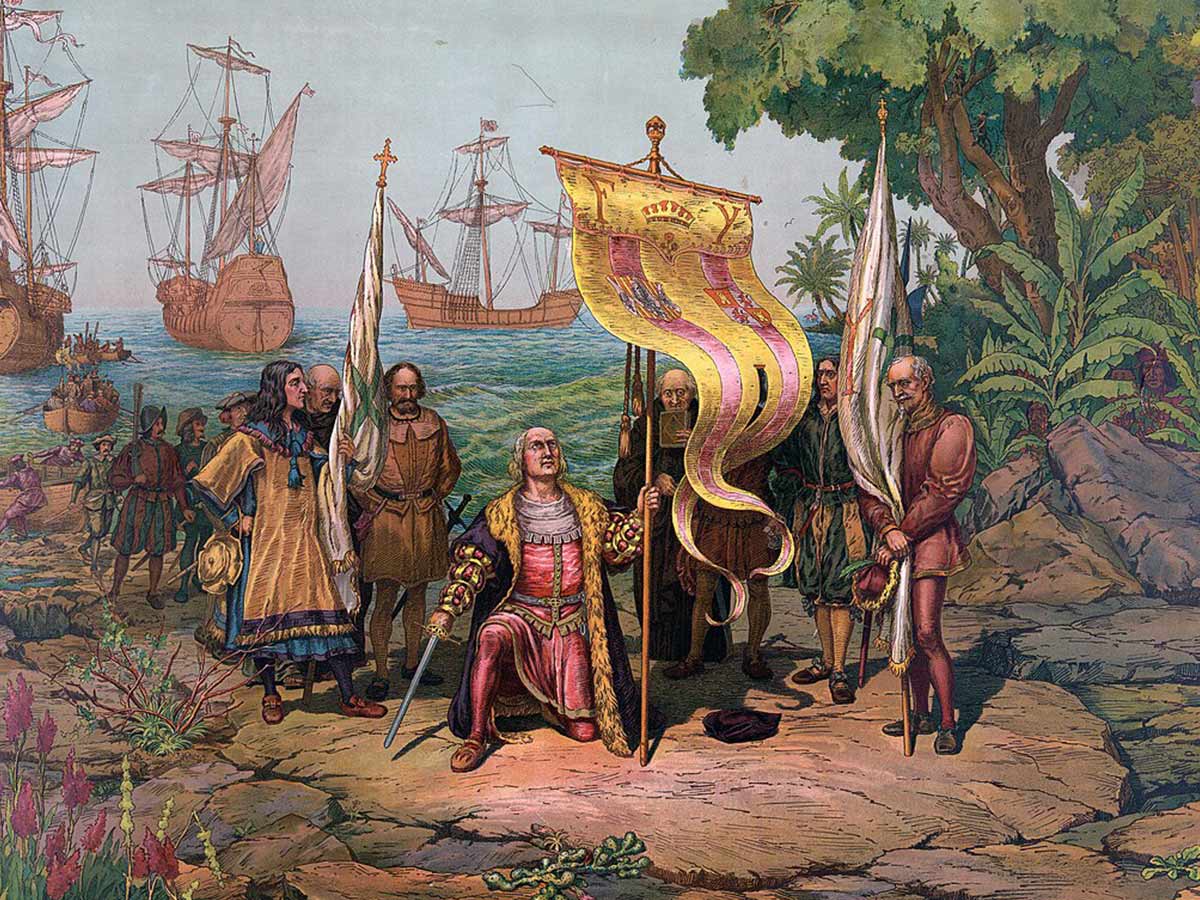
First of all, Columbus wasn’t the first person that sailed to America. That honor goes to Leif Eriksson, a Viking who walked on North American soil approximately 500 years before Columbus. On top of that, Columbus never came to the later-named nation of the United States of America. Instead, he landed on the Caribbean Islands.
The area in which Columbus landed is now what we refer to as the Bahamas. The native people called the land Guanahani, and Columbus renamed it San Salvador. So basically, it's important to note that he discovered the Americas NOT America as in the USA. And he wasn't the first to discover it.
(Image via: Marshall, H. E. (Henrietta Elizabeth), b. 1876, Public domain, via Wikimedia Commons; Brian W. Schaller, FAL, via Wikimedia Commons)
The Pilgrims Started the Thanksgiving Holiday
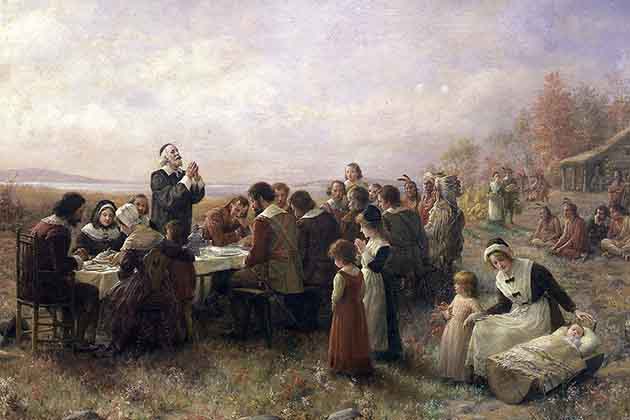
Despite what we though, the Pilgrims were not responsible for the Thanksgiving holiday. It wasn't until the Lincoln presidency that the United States began to observe the holiday annually--more than a century after the Pilgrims held their celebration! That's not to say that there wasn't a Thanksgiving feast, however.
Thanksgiving existed in some form during puritan times, but it was part of their tradition of fasting days and days of thanksgiving, dedicated to thanking god for a bountiful harvest. That being said, there were thanksgiving services held before the historic "first" thanksgiving. The one known to Americans, nonetheless, occurred in 1621, and it happened merely because there was a bountiful harvest.
Manhattan Was Purchased for Beads
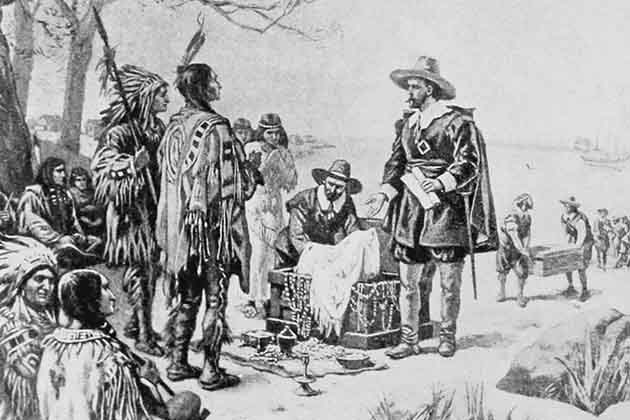
This one is partially true. The misconception is that the Island of Manhattan was purchased for around $24 worth of beads. History doesn’t show what items were involved in the transaction, but it equaled “60 guilders.” That would be roughly $1,000 today, and this was the same amount that was paid for Staten Island.
No doubt that it’s still low and wouldn’t even pay a month’s rent for an apartment there today, but it’s an important distinction. It's still a pretty good deal though, considering Manhattan is 33.58 square miles. The are was discovered by Florentine explorer Giovanni da Verrazzano in 1524 but was not mapped until Henry Hudson's voyage in the 17th century.
Southerners Feared Kitchen Fires
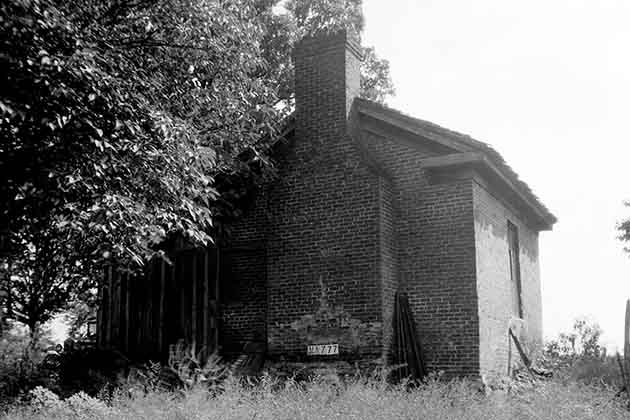
Some people claim that Southerners kept their kitchens unattached because they were afraid of house fires. But the reality has to do with Southern weather--it gets incredibly hot down there. Kitchens also get super hot, and a kitchen in the summer can be absolutely miserable.
Without air conditioning, the original Southerners detached their kitchens, so the rest of the home wouldn’t heat up too. And for clarification, this myth pertains to colonial times in which separate kitchens were not common in the north. But anyway, it's quite understandable why they wouldn't want things to get any hotter in the house. That's partially why we use barbecues in the summer.
Everyone in the Colonial Era Wore Wigs

We know a colonial setting when everyone is wearing a wig, but only about 5% of the population wore wigs. During this time, wigs were costly and only worn by those that could afford them – lawyers, statesmen, and gentry women. Even if the average Joe wanted to wear a wig, they couldn’t afford one on a blue-collar salary.
Essential wigs were a way for the wealthy to flaunt their statuses, like wearing a Rolex or a Versace handbag. Of course, now you could just buy one at any costume shop or buy a fancy one for like $100. But in the 1700s if you saw just some regular bald guy walking around bald, it's probably because he was poor like everyone else.
Lindbergh Made the First Transatlantic Flight

Being the “first” to do something makes you special, so when Charles Lindberg took his first transatlantic flight between New York and Paris in 1927, it made headlines. It was the first time he’d done it, but the first one was completed in 1919 by two British aviators named Alcock and Brown. They flew nonstop from Newfoundland to Ireland.
The two British pilots flew a modified WWI plane, the Vickers Vimy, for 72 consecutive hours. For their achievement, they were awarded the Daily Mail prize which was presented by Winston Churchill who was the Secretary of State for Air at the time. Additionally, they received the honor of Knight Commander of the Most Excellent Order of the British Empire by King George V.
The Wild West Was Incredibly Violent
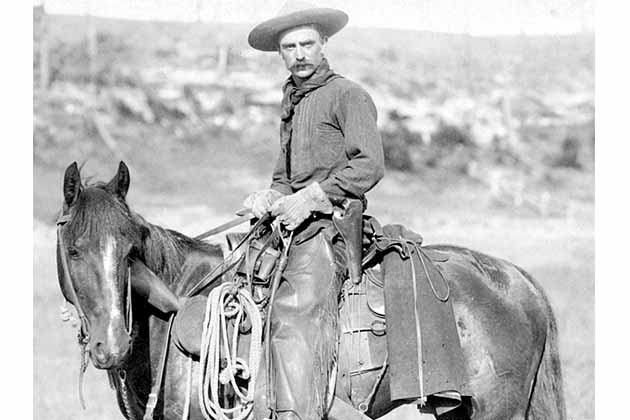
If you think about the Wild West, we think it was an unruly time with lots of shootings. The West wasn’t actually that violent. During 1859 and 1900, there were around 1.5 gun-related murders per year. That happens every few minutes in some United States cities today.
Even the O.K. Corral shootout wasn’t so much a shootout as it was the Earp brothers firing at the Clanton-McLaury gang. This “violent massacre” had a body count of three. It wasn't like in the movies where everyone is packing heat about to shoot you if they lose a card game.
Nelson Mandela Died in Prison in the 1980s

One of the most bizarre concepts to come out of the 2010s was the idea of the "Mandela Effect," which posits that when people misremember public places, events, or figures it's evidence of the existence of parallel dimensions where the misremembered facts are indeed true. And all of this came to be thanks to a misconception about Nelson Mandela.
The woman who dubbed the term "Mandela Effect" named it that after she realized that many people she knew wrongly believed that Nelson Mandela died in a South African prison in the '80s. However, this is far from the truth. Mandela actually survived prison and served as president of South Africa in the '90s and eventually passed away in 2013.
Cult Members Drank Kool-Aid at Jonestown
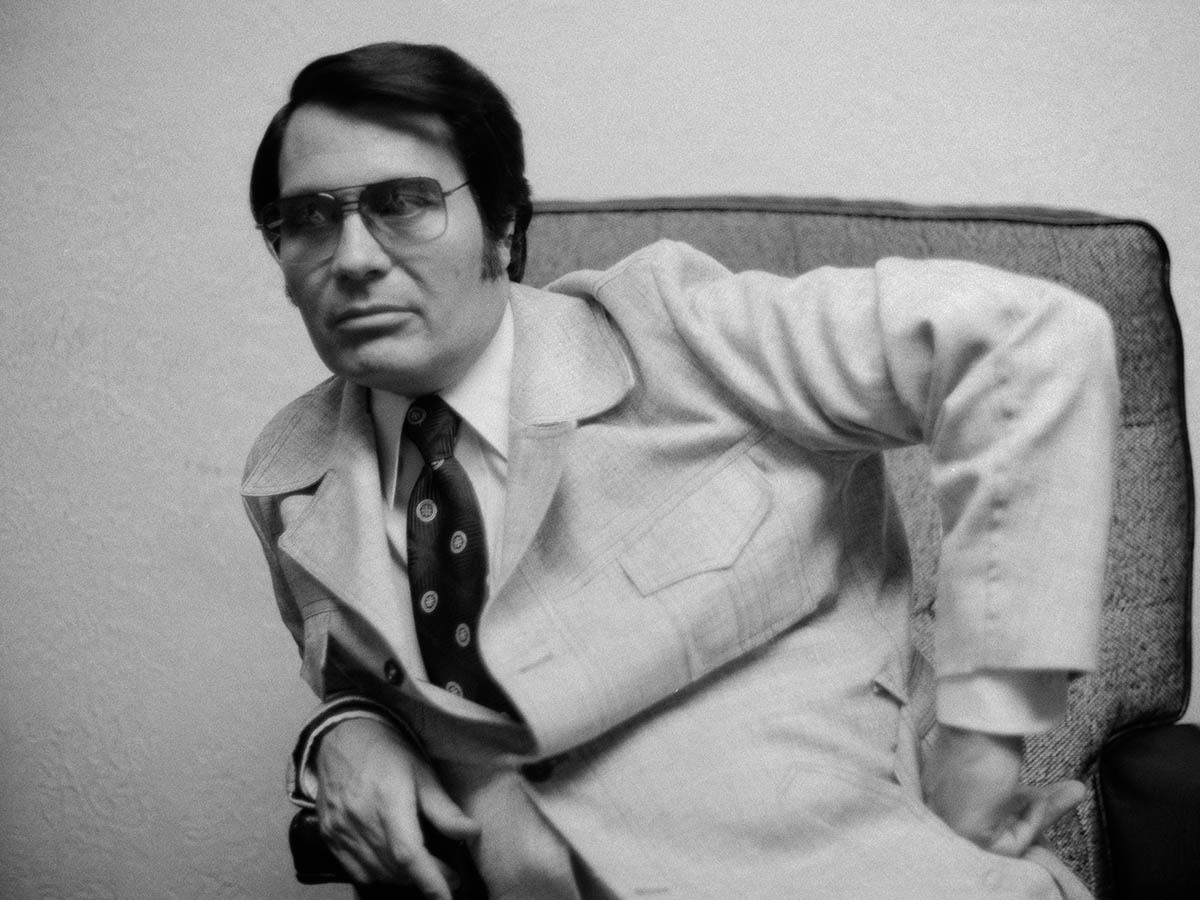
The mass suicides of the Jonestown cult is one of the darkest moments in American history. Led by their notorious leader, Jim Jones, cult members created a settlement in Guyana, where only a few years later, they would drink poison or be forcibly killed due to Jones' fears that the United States would soon be invading their home.
These tragic deaths are where we get the phrase "drinking the Kool-Aid," which is a figure of speech meaning that someone believes in something extreme or nonsensical. However, the members of Jonestown didn't actually drink poison Kool-Aid. In reality, they drank poisoned Flavor Aid (a Kool-Aid competitor).
Ronald Reagan was Responsible for the Fall of the Berlin Wall

When Americans think about the fall of the Berlin Wall, many of them remember then-president Ronald Reagan's famous line, "Mr. Gorbachev, tear down this wall!" That makes it seem like Reagan played a pivotal role in the fall of the wall, but that's not actually true—he just happened to have a very catchy line.
Reagan spoke those famous words in 1987, but the Berlin Wall didn't actually fall until 1989—if Reagan was actually responsible for bringing it down, the East Germans sure took their sweet time to follow his orders! In reality, the wall fell more because of reforms by the East Germans and Gorbachev specifically.
Rosa Parks was Arrested for Sitting at the Front of the Bus

Rosa Parks became one of the most pivotal and well-known figures of the Civil Rights movement after her actions on a public bus led to the growth of the Montgomery Bus Boycott. While Parks is definitely a hero for the movement, many people get the facts about her story wrong.
According to common belief, Parks was arrested after sitting in the "white" section of the bus and refusing to give up her seat to a white person. However, in reality, Parks was sitting in the "colored" section of the bus and was told to give up her seat to a white person after the white section became full. Parks refused and became a hero.
Feminists Burned Their Bras Outside of Miss America 1969

The term "bra-burning feminist" has been around for decades, but it looks like it might all be based on a misunderstanding. During the 1969 Miss America pageant, women did indeed protest outside the building in support of the women's liberation movement. However, no bras actually went up in flames.
Instead, during this protest, women symbolically tossed items they felt were stifling them, including bras, shoes, makeup, etc. However, no one set anything on fire. Instead, this idea came from a journalist reporting on the protest who speculated that women might start burning their bras in the same way that men had burned their draft cards.
(Images via Bettman/Bettman/Getty Images)
Soldiers Were Spit on After Returning Home from Vietnam

The Vietnam War was a difficult time in the United State's past, made worse by the fact that many people seemed bitterly divided because of disagreements about the necessity of the war. And to illustrate this divide, people often point out that anti-war protestors spat on soldiers returning from Vietnam.
Despite being a popular sentiment and featuring in TV and movies like Rambo, there doesn't appear to be a lot of convincing evidence that this was the case. Author Jerry Lembcke wrote a book about this phenomenon in the '90s and couldn't find any convincing media reports of this actually happening to soldiers.
 Author
Ron Winkler
Last Updated: December 12, 2025
Author
Ron Winkler
Last Updated: December 12, 2025